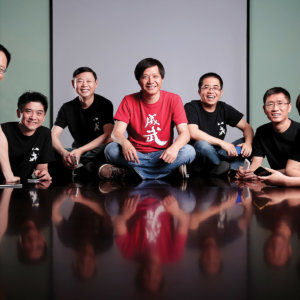When Customers Become Fans
The Chinese technology company Xiaomi cultivates a close connection with its customers through a product development process that invites user participation — as well as through social media and fan clubs.
Topics
In less than six years, Beijing-based Xiaomi Inc. has become one of the world’s leading smartphone makers. One key factor is that the company offers its phones to customers in China at lower prices than competitors like Apple Inc. — and sells mainly via e-commerce to keep costs low.
But Xiaomi has done more than just keep costs down; it has also cultivated user pride through user-centered and open innovation, harnessing the energies of enthusiastic customers known as “Mi Fans.” Xiaomi actively involves “Mi Fans” in both software and hardware development processes. For example, Xiaomi’s Android-based user interface MIUI went through a fast-iteration development process. Xiaomi put the first version of MIUI online in August 2010 and set up an Internet forum to communicate with a group of tech-savvy users. In the first week, Xiaomi got 100 users who volunteered to test MIUI. Since then, Xiaomi has been releasing improved versions weekly for a group of its lead users. Customer involvement in the product development life cycle has not only helped Xiaomi reduce R&D costs but also enabled the company to cultivate a sense of participation and pride among tech-savvy lead users. They, in turn, spread the word to other users and generate enthusiasm about Xiaomi products.
Customer involvement in the product development life cycle has not only helped Xiaomi reduce R&D costs but also enabled the company to cultivate a sense of participation and pride among tech-savvy lead users.
Thanks to such enthusiasm, when Xiaomi was about to unveil its mobile phone in September 2011, there were already 300,000 MIUI users, many of whom then became the first batch of customers for the Xiaomi smartphone. Xiaomi has continued to cultivate user participation through its online platform, which by April 2014 had more than 10 million registered users, generating more than 1 million visits and more than 250,000 posts every day.
Xiaomi turns to the Internet as a major channel to communicate with its users. When the youth version of the Xiaomi phone was launched, Xiaomi designed a marketing poster that mimicked a popular movie but starred seven company executives. This poster was put on Xiaomi’s microblog page and reposted 2.03 million times, and the number of fans “liking” Xiaomi’s official microblog account increased by 410,000. Xiaomi’s high-ranking executives are also good at interacting with the media. They are open to sharing Xiaomi’s stories and their own stories, which results in publicity.
Interacting with users in fun and lighthearted ways is another feature of Xiaomi’s marketing strategy. In China, Xiaomi has compiled humorous videos on different public websites to entertain people and raise awareness of its brand. Xiaomi has also devised a system to incentivize registered users on its website to play games in which they accumulate scores, VIP medals of honor, and even virtual Xiaomi money. Users with high scores and lots of medals are entitled to precedence in attending events organized by the company and buying in-demand Xiaomi products. They can also enjoy premium services.
To further build a sense of connection with customers, Xiaomi has designed off-line programs that arrange for the company’s high-ranking executives to meet with users in certain cities at irregular intervals in a lively and interesting atmosphere. Plus, Xiaomi fans in many cities have voluntarily organized local Xiaomi fan clubs. The company keeps in close touch with these clubs and provides support for their off-line events. This is a way for Xiaomi fans to communicate with each other and develop friendships off-line.
This model of participation and communication that harnesses fans’ passion, energy, and time generally works well for nonprofit programs like those for religious groups and believers or for universities and alumni. In recent decades, nonprofit open-source movements and Wikipedia have also drawn on similar methods to succeed. In contrast, the history of for-profit companies relying on fan energy and participation for growth is much more limited. It will be interesting to see the extent to which Xiaomi will be able to continue to tap into its customers’ enthusiasm as the company grows and matures.


Comment (1)
Youngju Hong